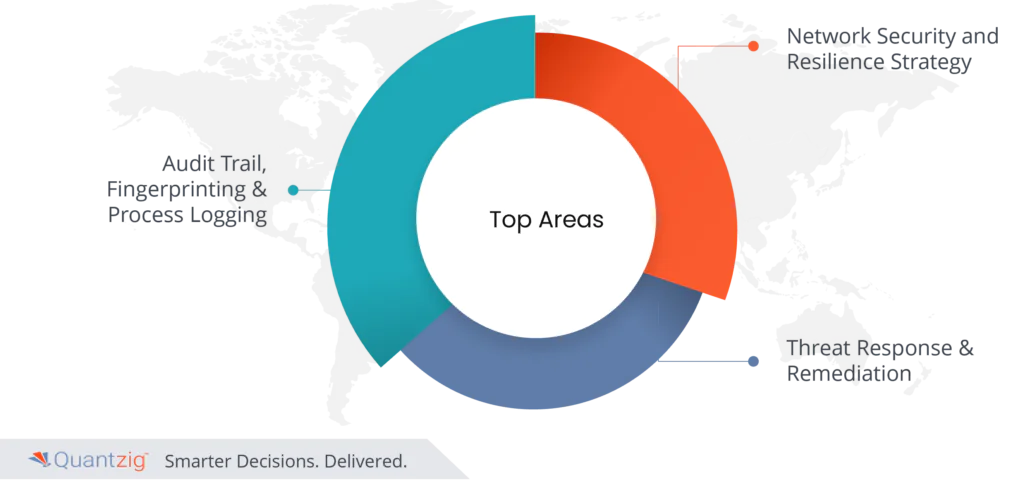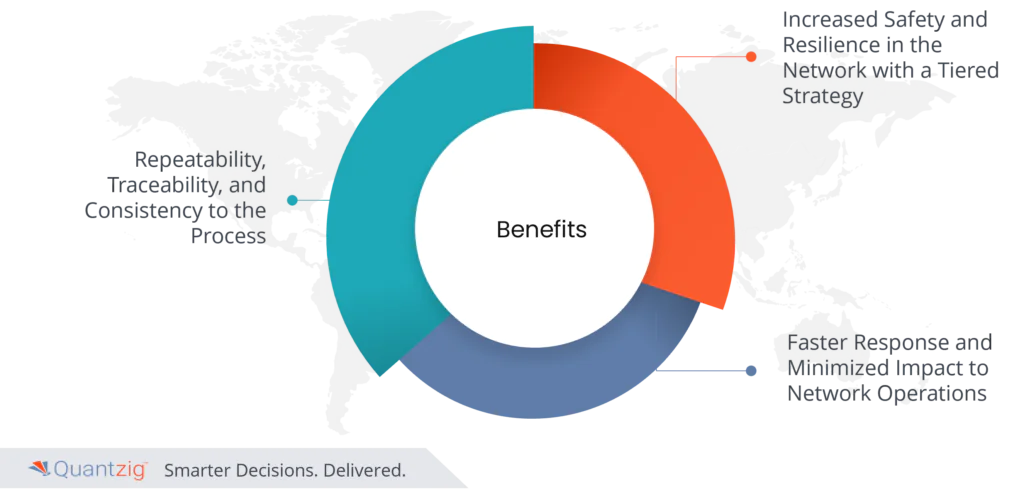Written By: Sudeshna Ghosh
In an increasingly digital landscape, the imperative for a robust Cybersecurity Strategy has never been more critical. This article navigates the intricacies of prioritizing and fortifying resiliency in the face of evolving cyber threats. As organizations grapple with sophisticated cyber-attacks, a strategic and proactive approach becomes paramount. This exploration delves into the key components of an effective cybersecurity strategy, emphasizing the importance of risk assessment, incident response planning, and continuous monitoring. By understanding the ever-changing cybersecurity landscape and adopting a resilient stance, businesses can safeguard their digital assets, sensitive information, and overall operational integrity. Join us on a journey to decipher the essentials of a cybersecurity strategy, enabling organizations to fortify their defenses and thrive in the digital age with confidence and resilience.
Table of Contents
Overview
Capturing Metadata and Process Repeatability:
- In contemporary cybersecurity, there’s a significant emphasis on capturing extensive metadata during information exchanges and operational processes.
- Process repeatability is a crucial aspect, allowing for the simulation of vulnerable process flows and the development of resilient defense mechanisms.
AI-Enabled Tiered Resilience:
- AI plays a pivotal role in establishing tiered resilience by implementing staggered guarding measures for infrastructure based on criticality.
- This classification ensures that higher levels of protection are accorded to mission-critical components, enhancing overall cybersecurity posture.
Quick and Real-Time Threat Responses:
- Effective cybersecurity demands swift, real-time responses to threats, breaches, and attacks.
- AI brings a dynamic solution, enabling scaled, data-driven responses that are both quick and adaptive, effectively minimizing the impact on networks and assets.
- The integration of AI in cybersecurity not only addresses the immediate challenges of threat response but also contributes to the strategic enhancement of overall resilience and protection.
Top Areas

Audit Trail, Fingerprinting & Process Logging:
- Establishing a robust cybersecurity strategy begins with meticulous documentation through audit trails, fingerprinting, and process logging.
- An audit trail ensures a comprehensive record of activities, while fingerprinting and process logging contribute to identifying anomalies and potential vulnerabilities.
Network Security and Resilience Strategy:
- The core of cybersecurity lies in a well-defined network security and resilience strategy.
- This involves deploying advanced measures to safeguard network infrastructure, ensuring not only protection against current threats but also building resilience to adapt to evolving challenges.
Threat Response & Remediation:
- A proactive approach to threat response and remediation is critical in cybersecurity.
- The strategy should encompass real-time threat detection, swift response mechanisms, and effective remediation techniques to minimize the impact of cyber threats and ensure the continuity of operations.
In essence, a comprehensive cybersecurity strategy that prioritizes audit trails, network security, and robust threat response mechanisms is fundamental to building resilience against the ever-evolving landscape of cyber threats.
Benefits

Repeatability, Traceability, and Consistency to the Process:
Ensuring the repeatability, traceability, and consistency of cybersecurity processes is foundational for effective risk management.
- Repeatability: It enables the replication of successful security measures across different scenarios, providing a standardized and reliable approach to addressing various threats.
- Traceability: The ability to trace every step in the cybersecurity process is crucial for understanding and analyzing security incidents. It facilitates forensic investigations, helping identify the source and impact of a security breach.
- Consistency to the Process: A consistent approach to cybersecurity processes ensures that security measures are uniformly applied. This consistency is vital for creating a robust security posture and minimizing the likelihood of overlooking vulnerabilities.
Increased Safety and Resilience in the Network with a Tiered Strategy:
Implementing a tiered strategy for multilayered defense enhances safety and resilience in the network.
- Multilayered Defense: A tiered approach involves layers of defense mechanisms, creating a fortified security architecture. Each layer adds an extra level of protection, reducing the likelihood of successful cyber-attacks.
- Enhanced Safety: The tiered strategy ensures that critical network components receive heightened protection. By categorizing infrastructure based on criticality, organizations can allocate resources more effectively, focusing on safeguarding the most vital assets.
- Improved Resilience: In the event of a security breach, a tiered strategy allows for compartmentalization and containment, limiting the impact and enabling faster recovery.
Faster Response and Minimized Impact to Network Operations:
Swift response and minimized impact are pivotal benefits of a robust cybersecurity strategy.
- Swift Response: A well-orchestrated cybersecurity strategy, enabled by AI-driven solutions, allows for real-time threat detection and immediate response. This agility is essential for thwarting potential threats before they escalate.
- Minimized Impact: By proactively addressing security incidents, organizations can significantly reduce the impact on network operations. Quick remediation measures help prevent disruptions, ensuring business continuity.
In summary, the benefits of prioritizing repeatability, traceability, implementing a tiered defense, and enabling swift response mechanisms contribute to a resilient cybersecurity strategy, safeguarding organizations against a dynamic threat landscape.
What the Future Holds
Digital Fingerprinting and Traceability of User/IP Activity:
The future of cybersecurity envisions an era where every user and IP activity leaves a digital fingerprint, allowing for comprehensive traceability and analysis.
- Traceability: Advanced digital fingerprinting ensures that every user’s online actions are uniquely identified and traceable. This level of granularity is essential for forensic investigations and understanding the specifics of a security incident.
- Session-Level Risk Profiling and Dynamic Guard Rails: Security measures will evolve to a dynamic model where risk profiling occurs at the session level. By continuously assessing the risk associated with each user’s session, organizations can dynamically adjust guard rails and access controls in real time. This adaptive approach strengthens security without hindering legitimate user activities.
Real-Time Systems for Early Warning, Threat Response, and Damage Control:
The future of cybersecurity lies in real-time systems that operate seamlessly, providing early warnings, rapid threat responses, and effective damage control.
- Early Warning Systems: AI-driven early warning systems will leverage predictive analytics and threat intelligence to identify potential risks before they materialize. This proactive stance enables organizations to preemptively address vulnerabilities.
- Integrated and Autonomous Threat Response: Cybersecurity systems will become more integrated and autonomous, orchestrating threat responses without human intervention. From identifying and isolating threats to implementing damage control measures, these systems will act swiftly and autonomously.
In summary, the future of cybersecurity is characterized by digital fingerprinting, dynamic risk profiling, and the integration of real-time, autonomous systems. These advancements aim to stay ahead of cyber threats, providing a robust defense mechanism against the evolving landscape of cyber risks.
Statistics:
The global cybersecurity AI market is poised for substantial growth, projected to achieve a remarkable 21.9% Compound Annual Growth Rate (CAGR) up to 2028, amounting to an estimated $60.6 billion. Demonstrating the industry’s recognition of AI’s pivotal role, an impressive 82% of IT and cybersecurity decision-makers plan to invest in AI within the next two years. The industrial sector takes the lead as the most substantial contributor to cybersecurity AI spending, commanding a significant market share of 40%. This underscores the critical importance placed on AI technologies to fortify cyber defenses, reflecting a widespread acknowledgment of AI’s efficacy in navigating the complex and ever-evolving landscape of cybersecurity challenges.
Conclusion:
In conclusion, prioritizing and fortifying cybersecurity resiliency through strategic measures is not just a choice but a necessity in the rapidly evolving digital landscape. With a focus on audit trails, process logging, network security, and proactive threat response, organizations can significantly enhance their security posture. The benefits are manifold, encompassing repeatability, traceability, and consistency in processes, alongside heightened safety, and resilience through a tiered defense strategy. The agility of a faster response, coupled with minimized impact on network operations, ensures that organizations can navigate the dynamic threat landscape with greater efficacy.
As we look ahead, the future holds promising advancements, including digital fingerprinting, dynamic guardrails, and real-time autonomous systems that promise to elevate cybersecurity to new heights of sophistication and effectiveness. Embracing these strategies and advancements is paramount for organizations committed to safeguarding their digital assets in an increasingly interconnected world.


